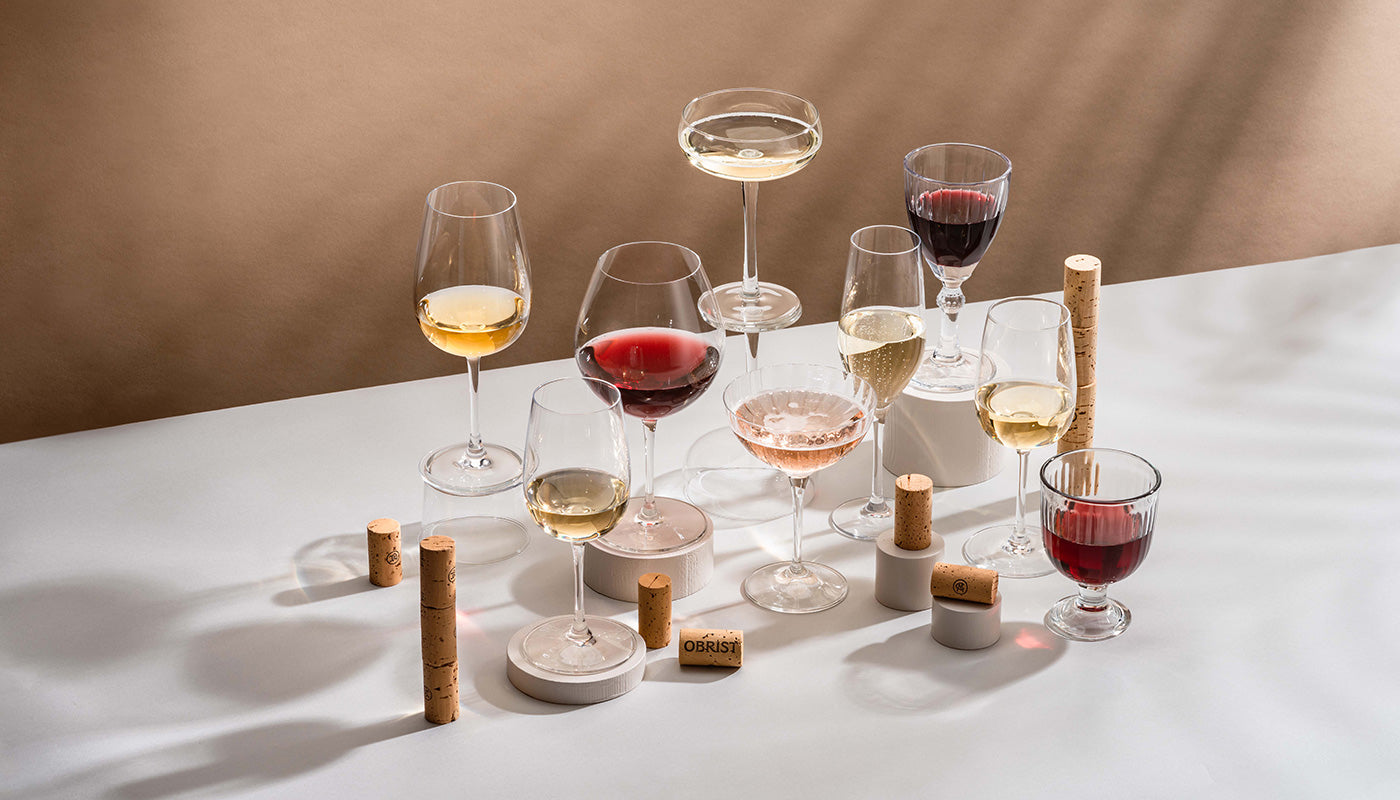Discover 10 sizes of wine bottles, from 0.375 liters to 18 liters.
In summary, if you only have a few moments
The size guide for wine bottles
Discover 10 sizes of wine bottles, from 0.375 liters to 18 liters.
In summary, if you only have a few moments
• Half bottle 0.375 liter
• The 0.75 liter bottle
• The 1.5 liter magnum
• The 3 liter jeroboam
• The 4.5 liter réhoboam
• Methuselah 6 liters
• Salmanazar 9 liters
• The Balthazar 12 liters
• The Nebuchadnezzar 15 liters
• Melchior 18 liters
Half-bottle of 0.375 liters - for sweet wines
The 0.375 liter bottle is equivalent to half of a standard 75 cl bottle (see below). This format is widespread, particularly for sweet wines .
The 0.75 liter bottle - a format of English origin
The 0.75 liter or 75 cl bottle is today the standard size throughout the world and the most widespread. And why 75 cl?
It is the English, major historical customers of French wines (notably Bordeaux ), who are at the origin of this capacity. Their unit of measurement, the imperial gallon, was in fact 4.54609 liters. To facilitate trade, it was therefore agreed that the transport of wines would be done in 225 liter barrels , equivalent to 50 gallons. And to make it simpler on the French side, instead of 225 1 liter bottles, a barrel would fill 300 75 cl bottles.
The 1.5 liter magnum - the format that means “large”
The magnum has a capacity of 1.5 liters, or 2 bottles of 75 cl. The magnum allows the wine to evolve more slowly and is therefore conducive to the long aging of quality bottles in the cellar. Its name comes from the Latin word “magnus” meaning “great”. This format is popular in Champagne for example.
The 3 liter jeroboam - a royal format
The 3 liter jeroboam is equivalent to 4 75 cl bottles of wine. You will notice that the names of the large containers often have a biblical reference, revealing the major place of the church in the production and consumption of wine. The name Jeroboam comes from Jeroboam I and Jeroboam II, two kings of Israel 1000 years BC.
The 4.5 liter Réhoboam - a biblical-sounding bottle
The Réhoboam contains 4.5 liters, or 6 bottles of 0.75 cl. Its name comes from Rehoboam, king of Judah and son of King Solomon according to the Bible.
The 6 liter Methuselah - a format that will last a long time
The 6 liter Methuselah makes 8 75 cl bottles. Methuselah, in the Old Testament, is a character who lived 969 years. A guarantee of longevity for a wine to keep!
The 9 liter salmanazar - you will need a lot of guests
The salmanazar is 9 liters, or 12 75 cl bottles. The name refers to five Assyrian kings.
The 12 liter balthazar - the bottle of the mage king
12 liters is the capacity of the Balthazar, which therefore contains 16 75 cl bottles. Balthazar is one of the wise men visiting Jesus at his birth.
The Nebuchadnezzar of 15 liters - 4 times king
The Nebuchadnezzar contains 15 liters of wine or 20 75 cl bottles. Nebuchadnezzar is also a name of biblical characters, borne by four kings of Babylon.
The 18 liter melchior - the bottle also called Goliath
The melchior can hold 18 liters, or 24 75 cl bottles. The term melchior comes from the mage king of the same name. In Champagne and sometimes Burgundy , this bottle size is called Goliath.
Does a wine age better in a large bottle?
Better, not necessarily, but slower, that's for sure. The size of the bottle has an impact on the conservation of the wine.
The larger the container, the slower the evolution of the wine will be. In fact, the evolution of wine is due to its oxidation and therefore its contact with air. It is not the glass that allows oxygen to pass through, but the cork. if it is made of cork. Porous, this material allows exchanges with air/oxygen.
The larger the container, the less volume of wine there will be in contact with this cork, and with oxygen: the evolution will therefore be slower. The aromas then evolve towards tertiary notes (animal, undergrowth), the tannins soften.
Note that if the wine is not suitable for aging, the container will not make much difference, but it will still be able to maintain its freshness for longer.
How do you choose a good red wine? Read our tips here
Store your wine correctly
In addition to the capacity of the wine, it is the way in which the wine is stored that takes precedence. The bottle should be placed horizontally so that the cork does not dry out and crack. If the cork is damaged, too much oxygen will leak into the bottle. And wine can turn into vinegar. Other important points, you must put the bottle in a place protected from light and noise, at a constant temperature (around 10-13°C), in a relatively humid place (humidity level between 60 and 75%). ).
For enthusiasts: a few additional bottle sizes
There are other sizes of bottles, and certain sizes have different synonyms depending on the region. The jeroboam is sometimes called a double-magnum for example.
You will also find the 0.2 liter piccolo, the 0.62 liter clavelin in the Jura, or the 570 liter maximus, the largest bottle in the world.


